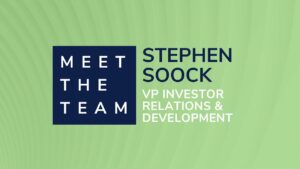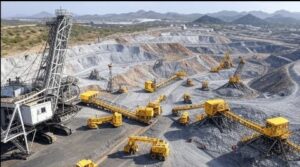VANCOUVER, B.C. — Silver Standard Resources Inc. (NASDAQ: SSRI, TSX: SSO) (“Silver Standard” or the “Company”) announced today the results of the Feasibility Study for its 100% owned Pitarrilla Project (“Pitarrilla” or the “Project”) located in the State of Durango, Mexico. The Feasibility Study was completed by M3 Engineering and Technology Corporation and Silver Standard.
Feasibility Study highlights1
- Silver Mineral Reserves: Probable Mineral Reserves of 479 million ounces of silver, approximately 5.2x the 91.7 million ounces reported previously.
- Long-life and high production: A 32-year project producing an average of 15 million ounces of silver per year during the first 18 years of production.
- Robust project economics: An after-tax net present value (NPV) of $737 million at base case metal prices and $1.7 billion at spot prices. An after-tax internal rate of return (IRR) of 12.8% at base case metal prices and 21.2% at spot prices.
- Capital expenditures: Total construction costs of $741 million, including $157 million of pre-production operating costs and $131 million of pre-production revenue.
- Low technical risk: Utilizes standard truck-and-shovel open-pit mining methods and well-established flotation and leach processing methods.
“The completion of the Pitarrilla Feasibility Study represents a major milestone for the Company,” said John Smith, President and CEO of Silver Standard. “In adopting an open-pit mining concept, we have defined one of Mexico’s largest silver mines and substantially increased silver reserves. We are now actively engaged in activities to bring the project into construction. While recognizing Silver Standard’s strong balance sheet, we are also looking to secure financing for the project. Our aim is to have the project ready for a construction decision in 2013.”
Economic analysis
The Pitarrilla Feasibility Study indicates strong economic returns and high leverage to silver prices. The metal price assumptions and key financial estimates for the project are presented in Table 1.
Project overview
The Feasibility Study evaluates the development and construction of an open-pit mine, processing facilities, a tailings storage facility and supporting infrastructure. Pitarrilla will be one of the largest silver mines in Mexico, producing an estimated 333 million ounces of silver, 582 million pounds of lead and 1,669 million pounds of zinc over a 32 year project life. The mine will produce an average of 15 million ounces of silver per year during the first 18 years of production.
Pitarrilla will use a standard truck and shovel open-pit mining method. A fleet of trucks is expected to haul an average of over 175,000 tonnes of material per day over 20 years. The plant will use standard grind, float and agitated leach circuits to process 16,000 tonnes per day of flotation/leach ore or 12,000 tonnes per day of direct leach ore. The Project will produce lead and zinc concentrates and a silver doré .
Pitarrilla is located approximately 160 kilometres north-northwest of the city of Durango. A paved roadway extends to within 47 kilometres of the plant site. The Company has been advised by the Comision Federal De Electricidad, Mexico’s national power utility, that it will provide power for the Project via a new powerline.
Mineral Resource estimate
This updated Mineral Resource estimate is based on all available data for the Pitarrilla deposit, including the results from over 15,000 meters of drilling performed at the Project during 2012.
Mineral Reserve estimate
The Company has prepared an updated Mineral Reserve estimate for Pitarrilla. Under the estimate, Probable Mineral Reserves of silver have increased to 479 million ounces of silver at Pitarrilla, 5.2 times the 91.7 million ounces reported in the Company’s September 21, 2009 NI 43-101 Technical Report.
Mining and processing
Pitarrilla will use standard truck and shovel open-pit mining methods. The expected mining life is 20 years, including three pre-production years. The pit will be mined in five phases, starting with Breccia Ridge and Cordon Colorado. Over the life of the Project, a fleet of trucks is expected to haul approximately 1.1 billion tonnes of material and 157 million tonnes of ore, at a strip ratio of 5.96:1.
Pitarrilla’s plant is expected to use standard crush, grind, float and agitated leach equipment to process 16,000 tonnes per day of float/leach ore or 12,000 tonnes per day of direct leach ore. The two ore types will utilize a common crushing and grinding circuit. Initially, highly-oxidized ore will be direct leached in an agitated leach circuit. Silver will then be extracted from the pregnant leach solution using the Merrill-Crowe process to produce silver-rich doré bars. Subsequently, the less oxidized and un-weathered sulphide ores will be processed in sequential lead and zinc flotation circuits to produce separate silver-bearing lead and zinc concentrates. Tailings from the flotation circuits will be processed in the agitated leach circuit to recover additional silver.
Over the Project’s life, the plant is expected to produce an estimated 604,000 tonnes of lead concentrate, with grades averaging 43% lead and 9,500 g/t silver, and an estimated 1.5 million tonnes of zinc concentrate, with grades averaging 46% zinc and 604 g/t silver. The leach circuit will produce 118.5 million ounces of silver in silver-rich doré bars. Discussions and analysis to date indicate that the lead and zinc concentrates may be sold domestically or internationally to potential customers in Asia, Europe and North America.
The potential to mine Mineral Resources located below the open pit was not evaluated in the Pitarrilla Feasibility Study, but may be evaluated later in the Project’s lifecycle.
Capital cost
All Project costs incurred prior to the declaration of commercial production are considered capital costs. The leach circuit commences commissioning 26 months after the construction decision, and achieves commercial production within ten months. The total capital required to construct the mine is $741 million.
Capital costs incurred after the start of commercial production are considered sustaining capital costs. The sustaining capital for the project is expected to be $404 million, including a $25 million contingency. Sustaining capital for the plant is included in plant operating costs, with the exception of a planned $45 million flotation plant upgrade in year 16.
Operating cost
Total operating costs on a per tonne of ore milled basis are presented in Table 7.
The total cash operating cost includes mine operations, process plant operations, general and administrative costs, smelting and refining charges, and transportation charges. Total cash costs (which also include direct process plant costs, administrative costs, and other charges) average $10.01 per ounce of payable silver (net of by-product revenues) over the Project’s life. Total production costs (which also include depreciation and amortization, asset retirement obligations, and capitalized mine development and pre-operating costs) average $15.91 per ounce of payable silver over the Project’s life. The cash costs are presented in Table 8.
Environmental, permitting and social responsibility
Pitarrilla has been designed to comply with Mexican mining regulations. An Environmental Impact Assessment (EIA) is expected to be completed and ready for submission to Mexico’s environmental agency in the first half of 2013. Studies conducted at Pitarrilla during the EIA preparation process include characterization of the topography, geomorphology, geology, soils, water (surface water and groundwater), climate, air quality, and flora and fauna. Several environmental, land use, and operating permits and agreements are required before construction begins.
Silver Standard has implemented a community relations program that includes environmental, medical, educational, infrastructure development, and social support services. This year, the Company provided medical assistance to members of local communities, completed clean-up projects around local rivers, planted trees and completed construction projects to improve infrastructure (including the installation of livestock fences, improvements to a suspension bridge, improvements to a water well and the installation of a media room at a local high school).
Next steps
Going forward, Silver Standard is focused on a number of key activities to position the Project for a 2013 construction decision. The Company will use the Feasibility Study as the basis for further discussions with financial institutions and potential partners. The Company will also continue to obtain the remaining surface access rights necessary for the permitting, construction and operation of the Pitarrilla Project. Applications for the required mining or operating permits will be submitted after receiving clear title or access agreements to all required land. At the same time, the Company will continue optimizing the Project through further engineering design and process development work. Infrastructure for the Project, including access roads, a communications system and ground water resources, will also be developed during 2013.
Qualified Persons
The scientific and technical data contained in this news release pertaining to Pitarrilla has been reviewed and approved by the following Qualified Persons (“QP”) under National Instrument 43-101 who consent to having their names included in this news release.
- Andrew W. Sharp, BEng., FAusIMM: Mr. Andrew W. Sharp, the QP who completed the Mineral Reserve estimate, has been employed by the Company as Vice President of Technical Services since September, 2011.
- Jeremy D. Vincent, B.Sc. (Hons), P.Geo.: Mr. Jeremy D. Vincent, the QP who completed the Mineral Resource estimate reported here, has been employed by the Company as Senior Geologist since September, 2011.
- Kelly Boychuk, MBA, P. Eng.: Mr. Kelly G. Boychuk, the QP who reviewed the Tailings Design/Surface Geotechnical and Water Balance sections of the Feasibility Study, has been employed by the Company as Director of Project Engineering since May, 2012.
- Trevor J. Yeomans, B.Sc. (Hons), ASCM, P. Eng.: Mr. Trevor J. Yeomans, the QP who completed the metallurgical sections of the Feasibility Study, has been employed by the Company as Director of Metallurgy since April, 2011.
Detailed report
A National Instrument 43-101 compliant technical report will be filed on SEDAR within 45 days of this news release and will be available at that time on the corporate website.
SOURCE: Silver Standard Resources Inc.
Contact:
Silver Standard Resources Inc.
Vancouver, B.C.
N.A. Toll Free: (888) 338-0046
All others: (604) 484-8216
E-mail: invest@silverstandard.com
Cautionary Statements on Forward-Looking Information: Statements in this news release are forward-looking statements within the meaning of the United States Private Securities Litigation Reform Act of 1995 and forward-looking information within the meaning of Canadian securities laws (collectively “forward-looking statements”). All statements, other than statements of historical fact, are forward-looking statements. Generally, forward-looking statements can be identified by the use of words or phrases such as; “expects”, “anticipates”, “plans”, projects”, “estimates”, “assumes”, “intends”, “strategy”, “goals”, “objectives”, “potential” or variations thereof, or stating that certain actions, events or results “may”, “could”, “would”, “might” or “will” be taken, occur or be achieved, or the negative of any of these terms or similar expressions. These forward-looking statements are subject to a variety of known and unknown risks, uncertainties and other factors that could cause actual events or results to differ from those expressed or implied, including, without limitation, risks relating to: the interpretation of drill results and the geology, grade and continuity of the Company’s mineral deposits; technological and operational difficulties or the delay, non-compliance or inability to obtain permits encountered in connection with development of the Pitarrilla Project; uncertainties related to title to the Company’s mineral properties; the Company’s ability to obtain the necessary surface rights for the lands required for successful project permitting, construction and operation of the Pitarrilla Project; changes in economic conditions or financial markets; changes in prices for the Company’s mineral products or increases in input costs; uncertainty of production and cost estimates for the Pitarrilla Project; risks and uncertainties associated with new mining operations including start-up delays and operational issues; litigation, legislative, tax (including employee profit sharing arrangements), environmental and other judicial, regulatory, political and competitive developments in Canada, Mexico, the United States and other jurisdictions in which the Company may carry on business; labour relations matters; and foreign exchange rate fluctuations, as well as other factors described in the Company’s most recent Form 20-F filed with the United States Securities and Exchange Commission and Canadian regulatory authorities.
This list is not exhaustive of the factors that may affect any of the Company’s forward-looking statements. The Company’s forward-looking statements are based on what the Company’s management considers to be reasonable assumptions, beliefs, expectations and opinions based on information currently available to management. We cannot assure you that actual events, performance or results will be consistent with these forward looking statements, and management’s assumptions may prove to be incorrect. Assumptions have been made regarding, among other things, the Company’s ability to carry on its exploration and development activities, the Company’s ability to meet its obligations under its property agreements, the timing and results of drilling programs, the discovery of mineral resources and mineral reserves on the Company’s mineral properties, the timely receipt of required approvals including obtaining the necessary surface rights for the lands required for successful project permitting, construction and operation of the Pitarrilla project, the price of the minerals the Company produces, the costs of operating and exploration expenditures, the Company’s ability to operate in a safe, efficient and effective manner and the Company’s ability to obtain financing as and when required and on reasonable terms. You are cautioned that the foregoing list is not exhaustive of all factors and assumptions which may have been used. The Company’s forward looking statements reflect current expectations regarding future events and operating performance and speak only as of the date hereof and the Company does not assume any obligation to update forward-looking statements if circumstances or management’s beliefs, expectations or opinions should change other than as required by applicable law. For the reasons set forth above, you should not place undue reliance on forward-looking statements.
Cautionary Note to U.S. Investors. Technical disclosure included herein has not been prepared in accordance with the requirements of United States securities laws. Without limiting the foregoing, the technical disclosure uses terms that comply with reporting standards in Canada and certain estimates are made in accordance with National Instrument 43-101 – Standards of Disclosure for Mineral Projects. National Instrument 43-101 is a rule developed by the Canadian Securities Administrators that establishes standards for all public disclosure an issuer makes of scientific and technical information concerning mineral projects. Canadian standards, including National Instrument 43-101, differ significantly from the requirements of the SEC, and mineral reserve and resource information contained in this news release may not be comparable to similar information disclosed by U.S. companies.
This news release uses the terms “Measured Mineral Resource” and “Indicated Mineral Resource.” U.S. investors are advised that while such terms are recognized and required under Canadian regulations, the SEC does not recognize them. Under U.S. standards mineralization may not be classified as a “reserve” unless the determination has been made that the mineralization could be economically produced or extracted at the time the reserve determination is made. U.S. investors are cautioned not to assume that any part or all of the Mineral Resources in these categories will ever be converted into Mineral Reserves.
This news release uses the term “Inferred Mineral Resources.” U.S. investors are advised that while such term is recognized and required under Canadian regulations, the SEC does not recognize it. “Inferred Mineral Resources” have a great amount of uncertainty as to their existence, and great uncertainty as to their economic and legal feasibility. It cannot be assumed that all or any part of an Inferred Mineral Resource will ever be upgraded to a higher category. Under Canadian rules, estimates of Inferred Mineral Resources may not generally form the basis of feasibility or other economic studies. U.S. investors are cautioned not to assume that any part or all of an Inferred Mineral Resource exists, or is economically or legally mineable.
The TSX has neither approved nor disapproved of the information contained herein.
















